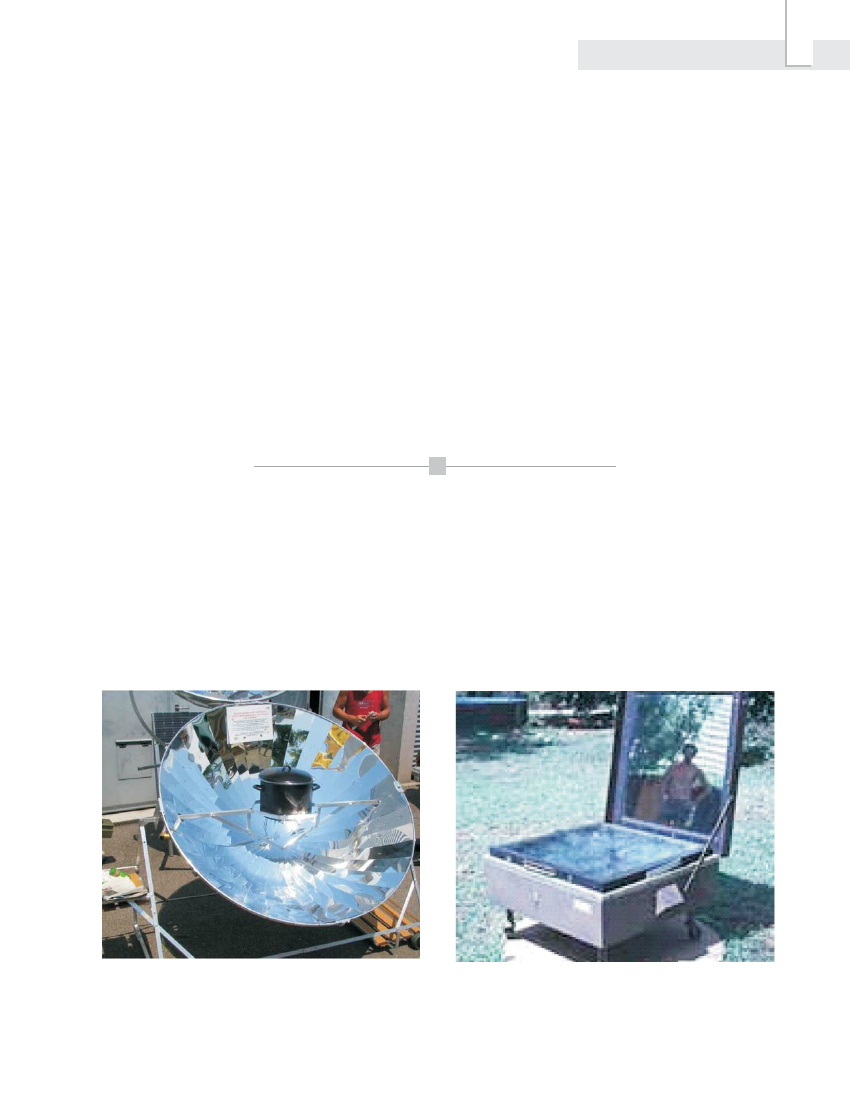
Inventory of Innovative Indoor Smoke
Alleviating Technologies in Nepal
51
Chapter Seven
SOLAR AND ELECTRIC
COOKING TECHNOLOGY
7.1 Solar cooking technology
The energy of solar radiation can be utilised in various
forms of thermal as well as photovoltaic use. High heat
obtained by concentrating the solar radiation using
reflectors can be used for cooking. High temperatures
are not needed for cooking as the temperature of food
can not go above 100°C at sea level unless it is
pressurised by any cooking vessel. An oven will cook
just fine as long as it heats up to about 90°C or so.
Higher temperatures cook larger quantities, cook faster,
and allow for cooking on marginal days. The temperature
reached by box cookers depends primarily on the
number and size of the reflectors used. The common
types of solar cooker in Nepal are shown in Photograph
7.1.
The parabolic solar cooker has a parabolic profiled
reflector and an absorber where the raw food is loaded.
Solar radiation incident on the larger surface of reflector
is focused on to the absorber, so the absorber receives
Parabolic type solar cooker
Source: www.crtnepal.org
Photograph 7.1: Common types of solar cookers in Nepal
Box type solar cooker
Source: www.solarcooking.org